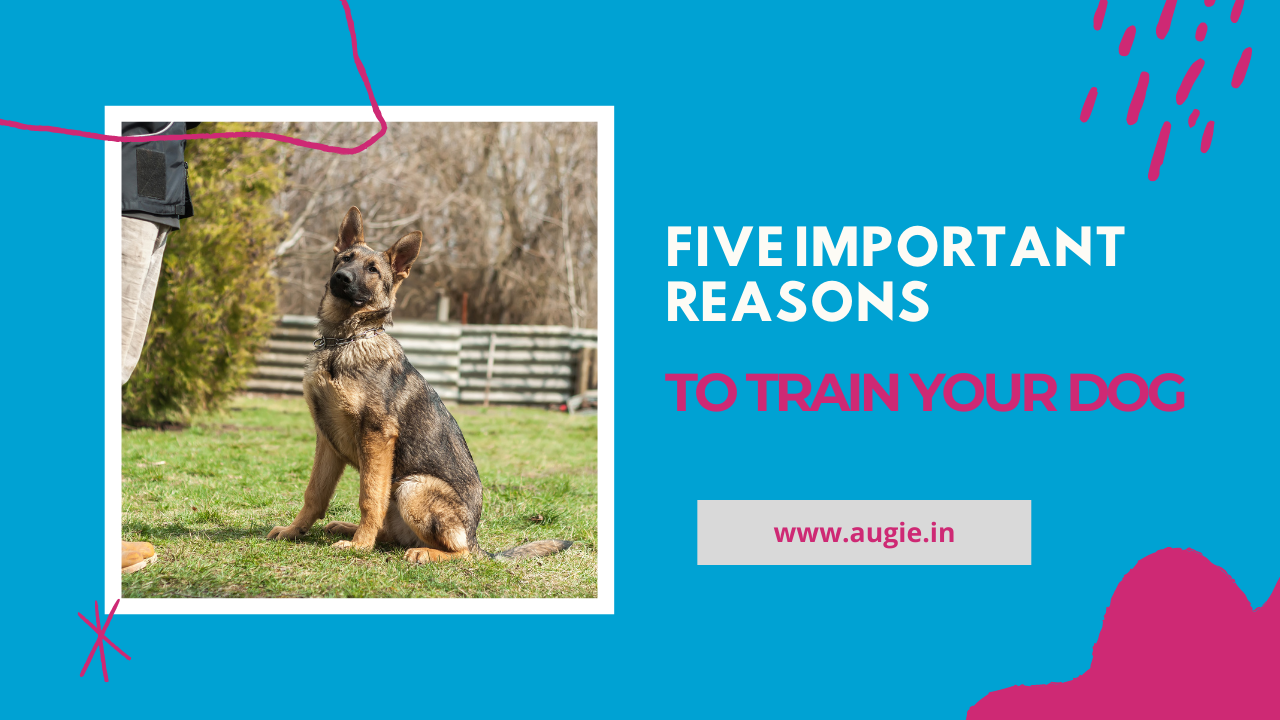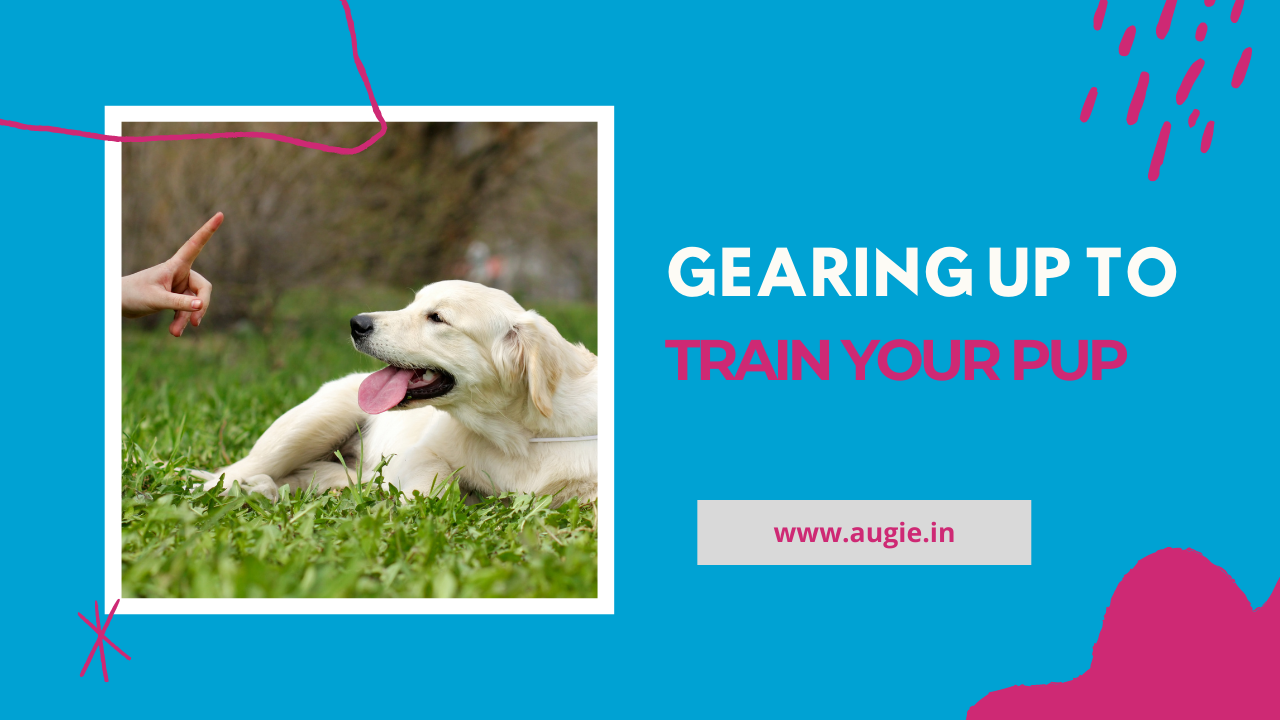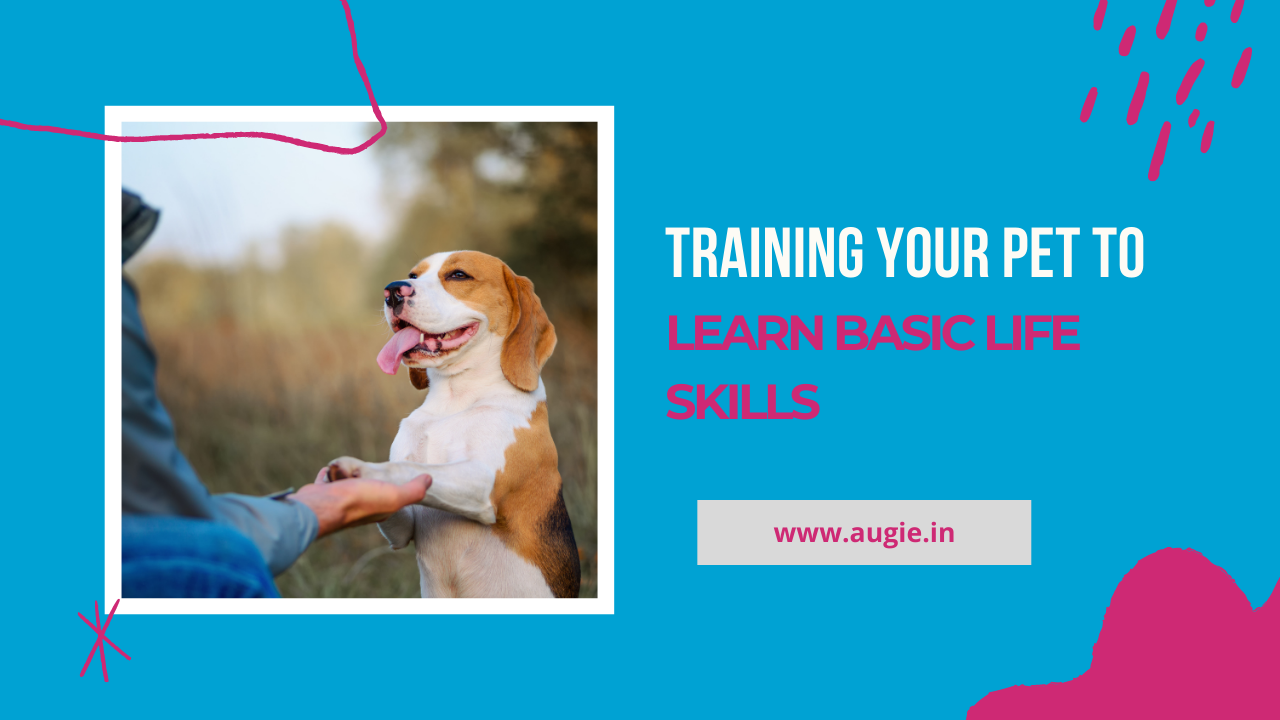Your personal handbook on training your pup
Bringing a new pup home is everything you have ever imagined and more. The joy of having a pet in your life knows no boundaries. Along with all the happiness you look forward to in your life, there is also a lot of work that to be put into Puppy Training.
Learning is enjoyable. Remember how ecstatic you felt when you learned a new skill? Dogs share this sentiment.
Dog training stems from their need to learn something new—and to do so with you, their favourite human on the planet.
People used to believe that Puppy Training was all about teaching them cool tricks and obedience instructions, which were frequently taught through negative reinforcement approaches that involved harsh punishment.
It was regarded a luxury for dog owners, and most of the time it was thought to be so simple and basic that anybody could do it without the assistance of necessary expertise and specialists.

Five important reasons to train your dog:
1. Teaching essential life skills: Other dogs (and people) will be more comfortable and at ease around your dog as she learns to respect limits and act appropriately in social situations.
As a consequence, your dog will have more pleasant interactions in the future. The most essential thing here is to manage her surroundings and make learning enjoyable and simple through positive reinforcement training.
Puppy Training how to greet visitors if she is sociable and enjoys meeting new pets and humans. Teach your dog to welcome visitors with a wagging tail rather than leaping or behaving aggressively.
When it is time to board your dog or when friends volunteer to look after her while you are away, that enhanced sociability becomes even more important.
It is one thing for your dog to heed your directions when you are not there, but a well-trained dog will also take orders from others when you are not around.
If you do not want to have to cut your trip short because your dog will not play well with others, make sure she is properly Puppy Training.
2. A better dog-owner relationship:
When it comes to Puppy Training, it is not only your dog who reaps the benefits. Puppy Training on a daily basis allows you to better understand her requirements, making you a better owner.
One of the best ways to understand your dog and what he is trying to communicate with you is through training. After all, dog-friendly Puppy Training makes learning more rewarding, simple, and enjoyable.
While you are busy teaching her, you will be spending more time with your pet, which will help to develop your bond. It may also be a terrific way to get some exercise and expand your horizons—the better behaved your dog is, the simpler it will be to take her with you everywhere you go.
3. For the sake of their safety:
The better you are at using voice instructions to control your dog in Puppy Training, the better you will be able to defend her while she is unrestrained.
When off-leash, a dog is considerably more likely to rush in front of a car or slip out the front door before you are ready to leave.
Furthermore, if your dog ever gets lost or needs to be placed in a shelter, being well-trained increases the chances that she will behave well or, if necessary, be adopted by a new family.
4. Avoid behaviour problems:
Puppy Training will help you and your dog develop a shared language of communication.
The more time you spend Puppy Training your dog, the more she will comprehend the language of communication and be able to prevent harmful behaviours caused by a lack of knowledge.
Dogs are punished for misbehaving that may have been avoided if there was better communication. Negative reinforcement, on the other hand, is never a good technique to Puppy Train your dog. It goes completely against the idea of learning a common language.
5. Makes socialising easier for puppies:
Not all canines are social by nature. Dogs were wild animals who had to learn how to socialise with other pack members and other animals over time.
When you are the owner of a domestic dog, though, you are expected to teach Puppy Training him how to meet, greet, and socialise with the other humans and dogs he will encounter.
This Puppy Training, however, should begin when they are puppies. You can enrol your puppy at a dog school where he will meet other puppies and receive socialisation training.
Allowing your dog to observe and chat from a distance without being uncomfortable during the interaction is one way to make her more friendly.

Frequency:
Dogs have such a limited attention span; each Puppy Training session should last no more than 15-20 minutes.
The optimal frequency is one session per day. Your dog may forget what they learned the day before if you miss days. The trick is to be consistent!
Positive reinforcement:
Each time your dog obeys the correct command, offer him Puppy Training treats, or praise him as a kind of positive reinforcement. When your dog is motivated, Puppy Training works best!
Rewards:
Small bite-sized treats are preferable for Puppy Training your puppy because you may need to give at least 15-20 treats in a single Puppy Training session, and larger treats can lead to weight gain.
The most important thing to keep in mind is that you want Puppy Training to be enjoyable for both you and your dog.
They will be more receptive to learning and even enjoy the lessons! Negative reinforcement, such as scolding or striking, should never be used.
Electronic Puppy Training methods employing an electrical collar controlled by a remote are becoming increasingly popular.
When the dog does something unfavourable, it receives a shock. This is a bad Puppy Training strategy since it causes fear and stress in the dog, as well as teaching them what not to do instead of what to do.
Although some Puppy Training approaches include positive and negative reinforcement, it is best to employ solely positive reinforcement.
Clicker training:
A clicker is a little button gadget that generates a clicking sound when pressed. You want your dog to learn to associate the clicker's sound with positive reward.
If your dog is not listening, do not hit or criticise them.
If they do the right thing, reward them; if they do not, do not. It is beneficial to use the clicker only when they follow the instruction word.
Do not click and reward them if they sit without you saying "sit." This will perplex them. You want your dog to understand what you are saying and obey! "Apollo, sit!" is a good example of using their name before or after the command in Puppy Training.
Say the command loudly, clearly, and enthusiastically so that your puppy feels compelled to obey you!
Model/Rival training:
Dogs are highly perceptive creatures, and we utilise this method to teach them to imitate the dog owner's desired behaviour.
You, as a pet parent, become the dog's role model and/or rival while Puppy Training at Home. To begin, make sure your dog reacts to the clicker by associating it with a positive action. While you are the "model," you will need a third person to act as the "trainer."

Training your pet to learn basic life skills:
Crate training:
Crate training is a method of Puppy Training or dog how to go outside and potty-training puppy.
When you are unable to supervise your dog, the crate is used to keep him contained. Because most dogs do not urinate or defecate in the same area they sleep, when confined to its crate, your dog will most likely try to suppress the desire.
When used properly, a crate keeps your dog from developing the bad habit of having accidents in your house and provides it with a safe haven equivalent to Puppy Training Toilet a canine paradise. It is not easy to do Puppy Training, but crate training is a great approach to help them adjust to their new home and establish a routine.
Your dog will learn to anticipate bathroom breaks and night-time once he has adjusted to his new schedule, making your life much easier.
Many people believe that after their dog is six months to a year old, they may let them run about freely. If they are alone at home, they might get bored and want to do something, which could entail ripping up your sofa.
As a result, Puppy Training to appreciate their crates is always a smart idea. Giving them goodies every time they go in their crates and feeding them from their crates is one method to do this.
Training to stop biting:
While their teeny-tiny canines grow in, puppies want to nip a lot. But they do not often comprehend how tough their little bites may be.
While they are still young, it is critical to teach them and do Puppy Training to not to bite you or others. Say "Ow!" in a loud, high-pitched voice, comparable to a puppy howl, if your pet nips you too hard.
This will alert them to the fact that they have bitten too hard and will instruct them to back off. When your dog listens, give them a reward or say, "Good boy/girl."
Another intelligent option is to simply ignore them. Turning around and tucking your hands behind your armpits is a tiny sort of attention withdrawal that functions as a calming signal.
To be alone:
Because dogs are typically gregarious creatures, their first time alone can be highly distressing.
When learning Puppy Training, keep the aim of canine independence in mind. Place your dog in a crate or exercise pen while you are still at home to begin teaching them how to be independent.
Make it a cheerful, relaxed environment by providing toys and food to keep them amused and satisfied while you are away.
Close the door quietly and exit the room once your dog is inside. Return with a tasty reward or words of appreciation after a minute or two.
Rep the procedure, progressively increasing the amount of time you spend away from your dog. Reward him or her if he or she continues to be quiet and peaceful.
Make sure you do not spoil them too much when you return, as this will simply make them miss you more when you depart.
You and your dog should have built up to a pretty extended period of time apart after a few days so that you can go to work without your dog whimpering too much.
Washroom training:
When you first bring your puppy home, one of the most important things you should do is house-train them.
It is critical to teach your puppy "the home rules" as soon as you get her. If your dog does not learn these norms as a puppy, she will not likely obey them as an adult.
Positive reinforcement, crate training, and leash training will go a long way toward educating your puppy to use the potty only outside.
Leash training:
Although it may appear clear, playful pups do not always walk well on a leash. In this situation, practise makes perfect.
When it comes to socialisation and housebreaking, teaching a puppy to walk gently and respectfully on a leash will come in handy in Puppy Training.
You are not getting far if you cannot keep your dog under control on a leash. Leash training a puppy is important considering all the pros.
Aside from the fact that leash restrictions exist in most locations, there will be situations when keeping your dog on a leash is necessary for his protection.
Learn how to introduce your dog or puppy to the leash, then show him how to walk on it properly, even while riding a bike behind you.
Walking on a loose leash teaches your dog not to pull or lunge when on the leash, making the experience more enjoyable for both you and your dog.
We have an ideal mix of Products and Services that can aid you in your efforts to take care of your pets. We work with different pets viz. Dogs / Cats / Other pets
You can reach out to us, and we can aid you. Looking forward to working with you
Have a great Day Ahead!!





